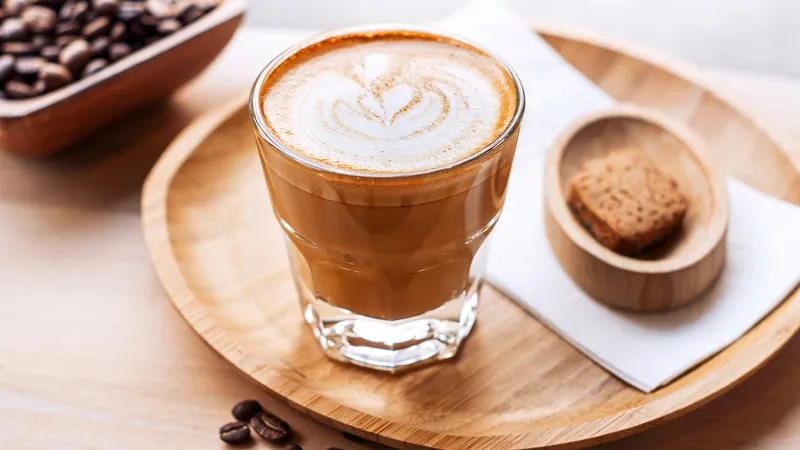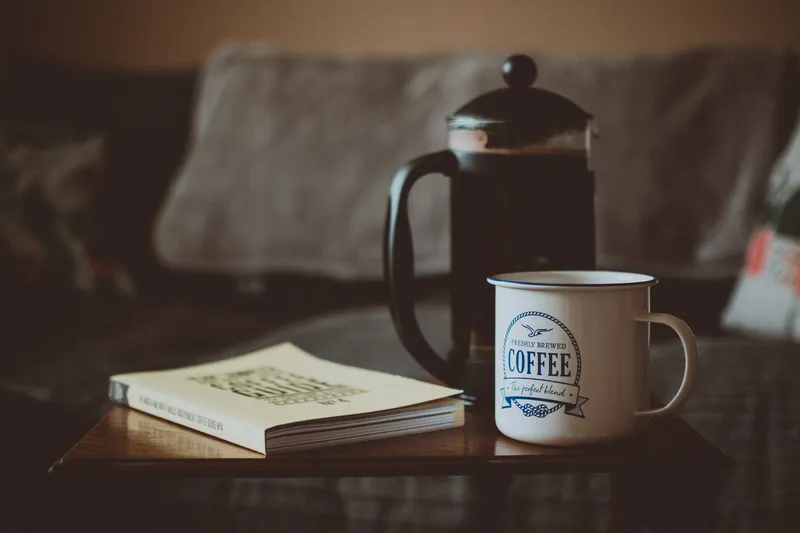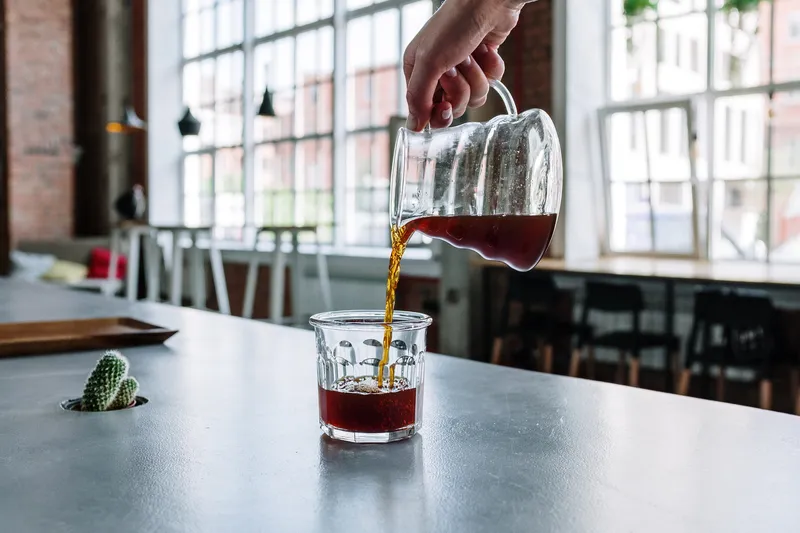If you've ever savoured the goodness of a Spanish latte, you're already aware of its delightful taste. But as the summer season approaches, why not switch things up and treat yourself to a refreshing iced Spanish latte?
You might be surprised to find that a Spanish latte isn't a typical offering at your everyday coffee shop, but it's a hidden gem worth discovering.
This beverage is often overlooked, yet it boasts a delightful combination of scalded milk, espresso, and a touch of creamy sweetness from sweetened condensed milk. The Brewing Hub is on a mission to give this drink the recognition it deserves!
Please continue reading to dive into the world of Spanish Latte, exploring its ingredients and the simple steps to craft it.
While the recipe may be straightforward, it promises a wonderfully refreshing experience, especially on a scorching summer day. Below, we'll guide you through crafting your very own iced Spanish latte at home and highlight the essential ingredients you'll need.
What Exactly Is an Iced Spanish Latte?
An iced Spanish latte is a delightful chilled coffee beverage featuring a blend of milk, espresso coffee, sugar syrup, or sweetened condensed milk. It's expertly mixed to create a creamy, refreshing concoction, generously poured over a bed of ice.
While the ingredients for a Spanish latte remain consistent, this iced rendition introduces some subtle modifications, transforming it into the ultimate cooling refreshment. Let's delve into the components used and explore how you can tailor them to craft a personalized version of this delectable drink.
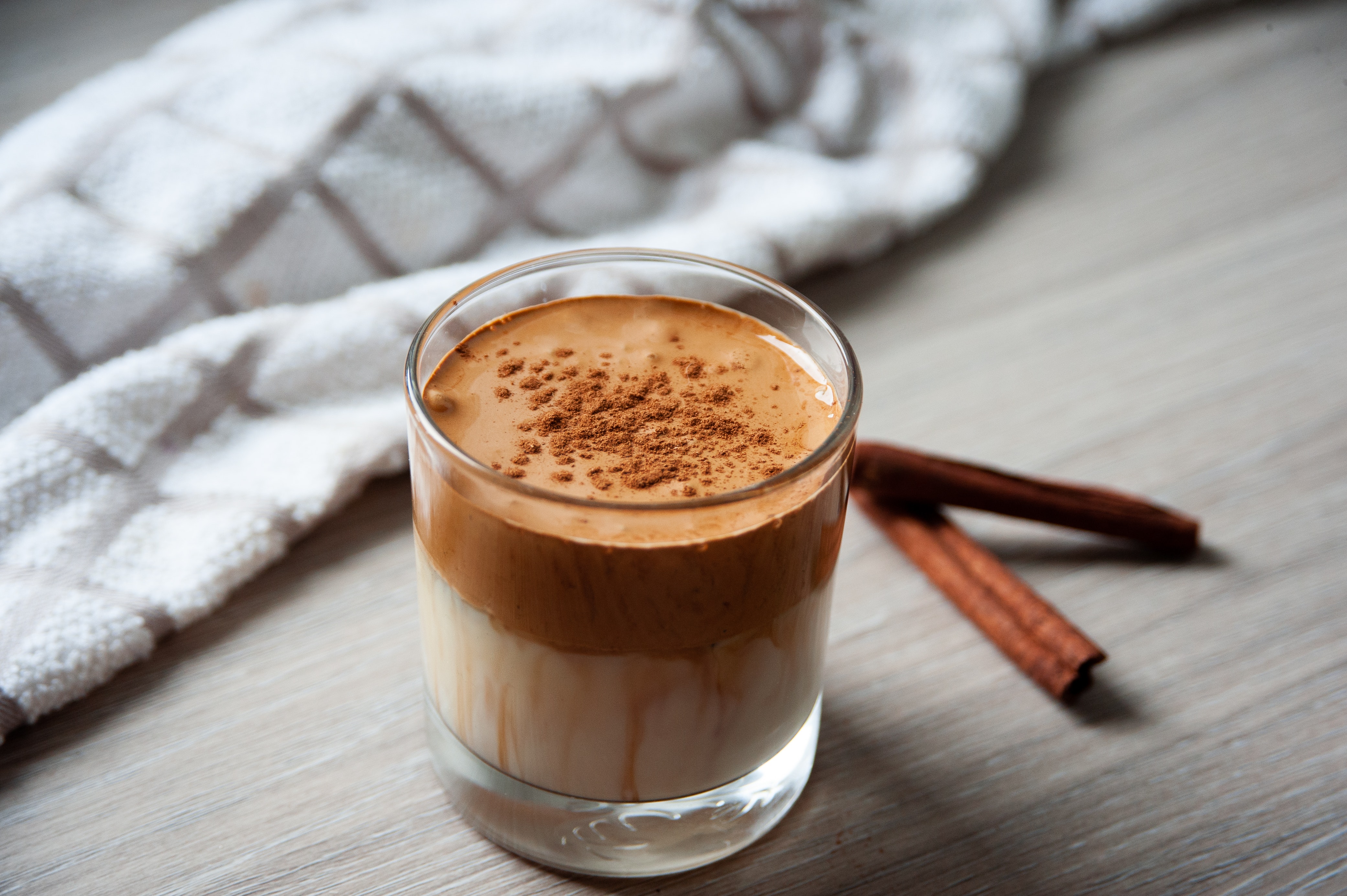
Here's What You'll Need for Your Spanish Latte Recipe:
- Two 1.5-ounce shots of espresso or robust coffee (3 fluid ounces total)
- 3 fluid ounces of whole milk
- Four tablespoons (2 fluid ounces) of sweetened condensed milk
- 15 grams of coffee beans
- A reliable coffee grinder (manual or automatic)
- An espresso machine, stovetop espresso maker, or Aeropress with attachments (check 'Extra Notes' and 'Pro Tip' below)
- A precise scale
- A sturdy, high-quality tamper
- A whisk, French press, or milk frother
- A saucepan
- A thermometer
- One 16-ounce coffee mug
| Quick Overview: | |
| Brew Time | 8-10 minutes |
| Yield | 16 ounces |
Here are Some Handy Tips for Crafting Your Spanish Latte Recipe:
- While The Brewing Hub provides this recipe using espresso, don't hesitate to swap it out with robust filter coffee from your coffee machine or even French press brew. The crucial factor in a Spanish latte is the milk-to-coffee ratio, so select the roast or brewing method that suits your taste best.
- In contrast to crafting a classic latte or iced latte—where the typical ratio is ⅔ steamed milk to ⅓ espresso—a Spanish latte relies on equal parts of espresso and scalded milk.
- Although The Brewing Hub recommends a latte machine for optimal results, you can employ a stovetop espresso maker or even an Aeropress with the JOEPRESSO attachment. As a bonus, the JOEPRESSO can help froth the milk and brew espresso-style coffee simultaneously.
- For precise milk heating, it's advisable to use a thermometer. Since we're scalding the milk rather than bringing it to a boil, aim for a temperature of 181 degrees F, as opposed to the traditional 155 to 165 degrees usually sought when steaming milk.
- Lastly, if you want to create an iced Spanish latte, consider using cold-brew coffee concentrate and cold-brew ice cubes. Given the high coffee-to-milk ratio, it's vital to avoid diluting the drink with regular ice cubes.
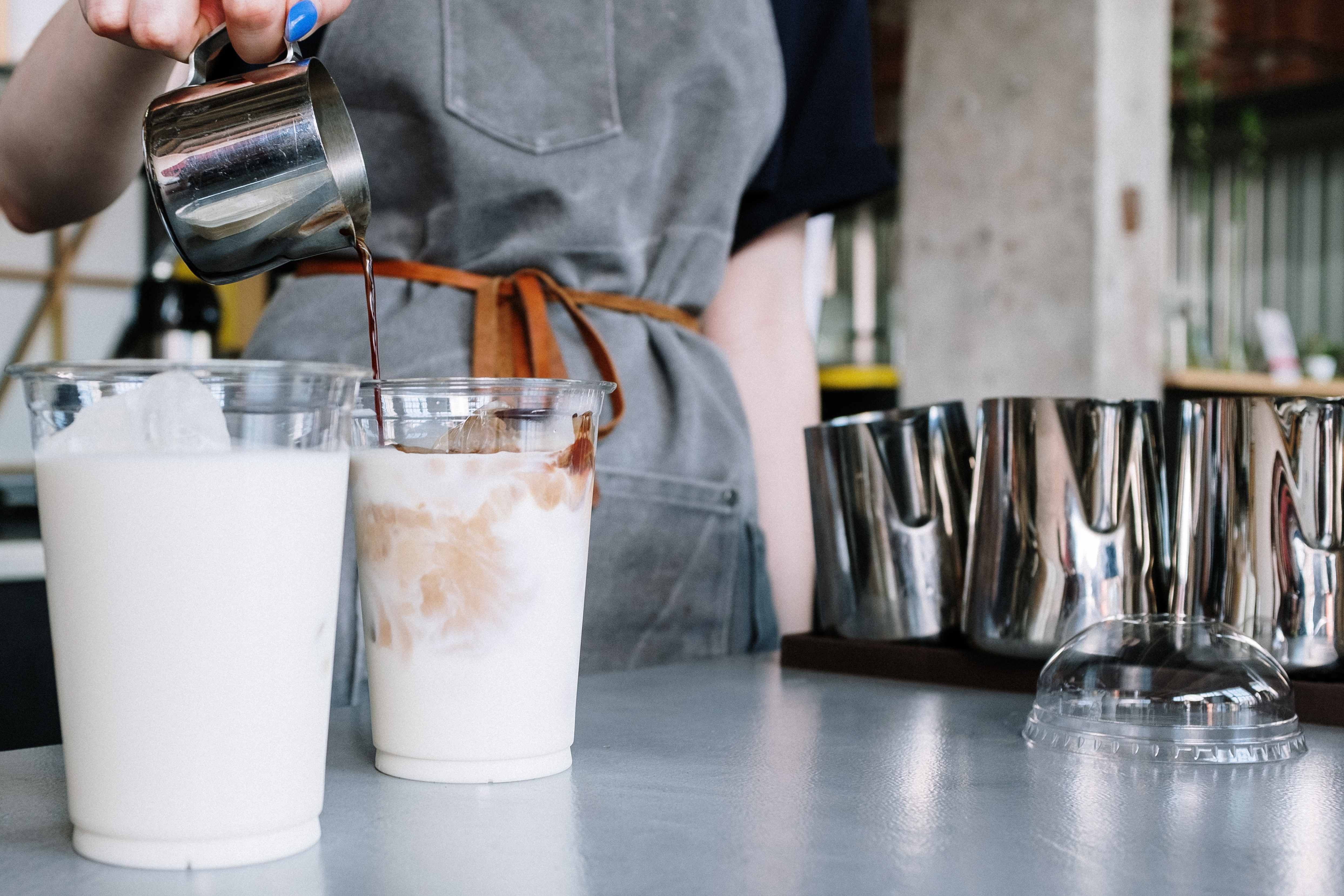
Here's How to Prepare Your Iced Spanish Latte:
- Prepare Your Coffee Mug with Sweetened Condensed Milk: Start by adding two tablespoons of sweetened condensed milk to your 16-ounce coffee mug.
- Grind Your Coffee Beans: Measure out 15 grams of coffee beans and grind them to a fine espresso consistency. Whether you're using a manual or automatic coffee grinder, aim for a uniform, fine grind suitable for espresso.
- Scald Your Milk: In a saucepan over medium heat, gently bring 3 ounces of whole milk to a simmer. Stir occasionally with a whisk to prevent burning. To achieve the desired scalding, monitor the milk's temperature with a thermometer until it reaches 181 degrees Fahrenheit. If you lack a thermometer, keep a vigilant eye out for the faintest signs of bubbling and promptly remove it from the heat to prevent boiling.
- Pull Your Espresso Shots: While your milk is gently heating, measure fifteen grams of medium-fine to fine-ground coffee into the portafilter or JOEPRESSO filter basket. For optimal extraction, tamp and polish the coffee puck before brewing. If you're unsure about this process, refer to our espresso machine guide for more details.
- Aerate Your Scalded Milk: By now, your 3 ounces of milk should be ready for aeration. If you have a latte machine, you can streamline the process by aerating and emulsifying the milk simultaneously. However, if you're using a frother or a non-steam method, these steps remain separate. To aerate or froth the milk, you have several options. You can use the pressurized filter basket of the JOEPRESSO to create frothy milk with your scalded milk. Alternatively, introduce air into the milk using a whisk or a French press.
- Assemble Your Iced Spanish Latte: With your milk sufficiently aerated and emulsified, it's time to put together your Iced Spanish Latte. Begin by pouring two shots of espresso or strong coffee into your 16-ounce coffee mug. Use a spoon to hold back the foam as you pour in the scalded milk. Finish by spooning an additional ounce, or two tablespoons of sweetened condensed milk over the scalded milk, and top off your drink with the remaining foam.
Feel free to garnish with whipped cream or additional sweetened condensed milk if desired.
| Pro Tips for Your Iced Spanish Latte |
| Coffee Bean Quantity: While fifteen grams is the standard amount for a typical doppio, it may vary depending on your equipment. Always refer to your machine's portafilter, stovetop espresso maker, or JOEPRESSO's filter basket instructions for precise measurements. |
| Efficient Milk Heating: To streamline the process, consider heating your milk on medium-low to low heat while you prepare other components of the recipe. Stir every two minutes to prevent the milk from scorching. |
| Creative Latte Art: Don't worry if you lack a milk frother or steam wand. You can still craft impressive latte art using frothed milk in a French press. Check out Lance Hendrick's demonstration of this technique. |
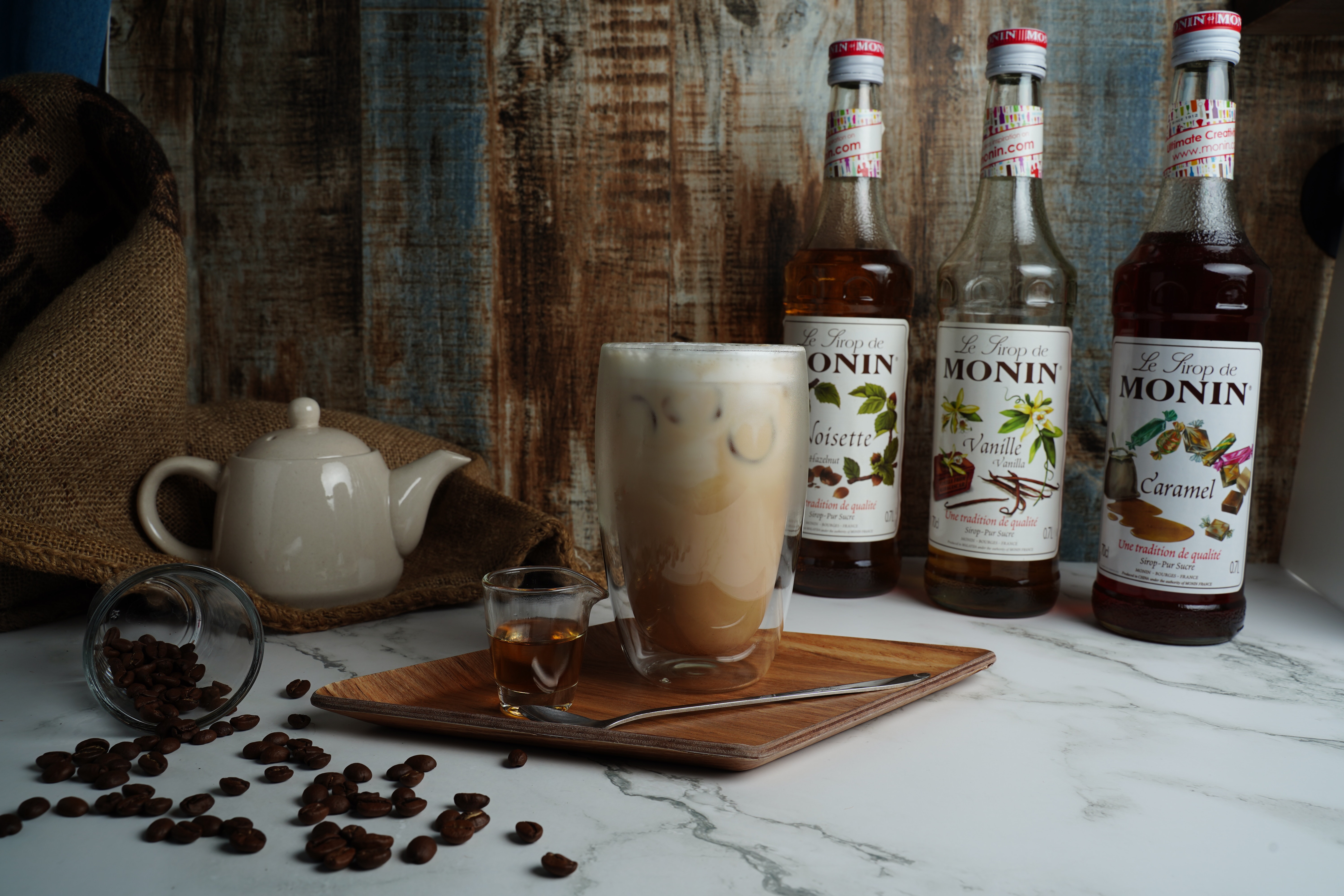
How Many Calories Does an Iced Spanish Latte Contain?
The calorie content of your iced Spanish latte can vary depending on your choice of ingredients. Here's a breakdown of the calories in each component:
- Condensed Milk: Provides the most calories, with 130 calories.
- Whole Milk: Contributes the remaining 73 calories.
- Using Simple Syrup as an Alternative: Adds 19 calories per tablespoon.
As you can see, you can significantly reduce the calorie count by substituting whole milk with a lower-calorie option like simple syrup. The choice ultimately depends on your preference. While condensed milk imparts a delightful flavour, simple syrup is a suitable choice if you're looking to cut down on calories.
In Conclusion
If you've ever read the article on the hot Spanish latte, you might have wondered about creating a refreshing iced version for those scorching summer days.
Well, good news! The result of this recipe is quite satisfying, and you'll enjoy it while reading this article. What's great is that you can customize this recipe to your heart's content—choose your favourite coffee, sweetener, and milk type.
But wait, there's more! A cold brew twist on the Spanish latte is also on the cards. Don't forget to explore the classic iced latte recipe for even more choices.

